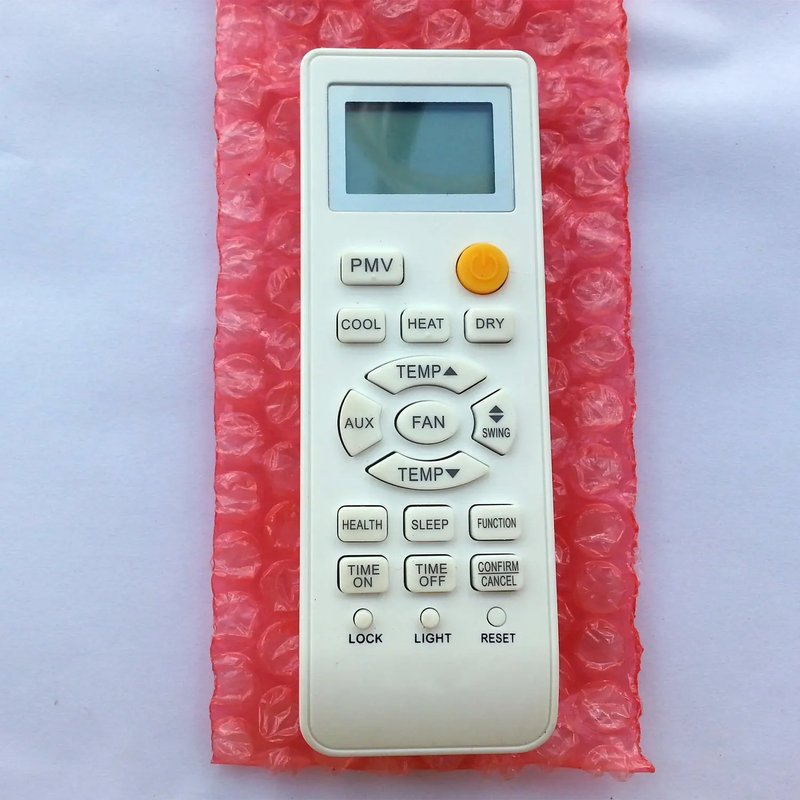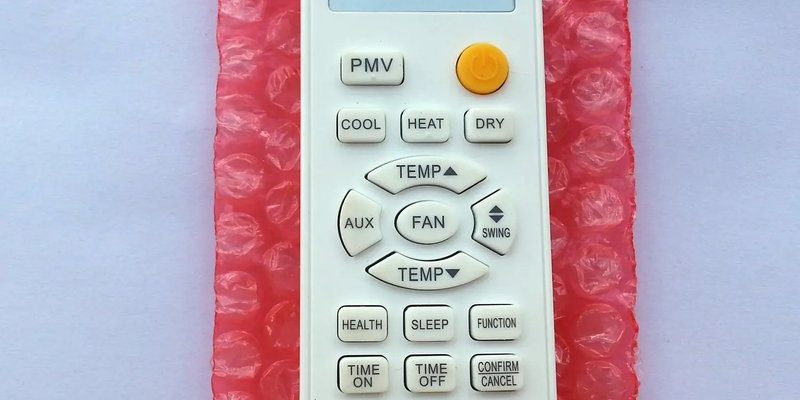
Let me put it this way: think of the remote as a tiny translator that sends secret codes to your air conditioner. If you get a new unit, or you want a backup remote, you’ll want both “translators” to speak the same language. That’s what cloning is all about. Today, let’s break down exactly how to clone your Haier AC remote to a new unit, step by step—no tech degree required, no confusing jargon. Whether you’re staring at a pile of remotes on the table, or just bought a universal remote at the hardware store, I’ve got you covered.
What Does It Mean To Clone a Haier AC Remote?
Cloning a remote isn’t as mysterious as it sounds. You’re basically copying the control signals from your old Haier air conditioner remote onto a new one, so that both can operate the exact same AC unit (or, flip side, one remote can work with several different units if they’re compatible). It’s like programming a second door key—handy when you want a spare or you’ve upgraded your AC.
Here’s the thing: Haier AC remotes use infrared (IR) signals, which are just light pulses with instructions hidden inside. Each button on your remote sends a different IR code. Cloning is the process of copying those codes from the original remote to a new or universal remote that can “learn” them. It’s a game of copycat, nothing more.
But—and there’s always a but—*not every remote is cloneable.* Most Haier factory remotes come pre-programmed and don’t have a learning function. For cloning, you’ll usually need a universal learning remote or a Haier model that supports code learning. Take a peek at your new remote’s manual. If you spot words like “learning mode,” “code sync,” or “pair,” you’re in business.
Getting Ready: The Remotes and What You Need
Before you get into button mashing, collect your tools. You’ll need your original Haier AC remote (the one that actually works), your new remote (which could be universal or Haier-branded), and some fresh batteries. Trust me, don’t skip the battery check—weak power can throw off the whole process and have you pulling your hair out.
Here’s a simple checklist of what you should have on your table:
- Original Haier AC remote (the one you want to clone)
- New or universal learning remote (with “learning” or “sync” function)
- Working Haier AC unit to test the remotes
- Fresh batteries for both remotes
- Table or surface to work on
- Patience… because sometimes technology plays hard to get
If your new remote isn’t built for code cloning, you might need to get a universal remote that specifically says “learning” in the description. Don’t be fooled by “universal”—not all of them can actually copy other remotes. Ask at the shop or check the box for words like “copy,” “learning,” or “clone.” Otherwise, it’s like trying to photocopy without a scanner—no go.
How Cloning Works: A Simple Breakdown
Alright, time for an analogy: Imagine your remote is a cassette tape (yeah, old school), and you want to copy the music onto a blank tape. The learning remote is the blank tape—it sits and listens to the song (the IR code) and records it for later. When you’re done, it can “play back” the same music to your AC unit.
This process usually goes like this:
- Put both remotes, old and new, facing each other about 1-2 inches apart.
- Make sure both have working batteries—seriously, this is huge.
- Put the learning remote into “learning” or “clone” mode. (Check your manual for the exact button—often it’s “SET” or “LEARN.”)
- Press the button on your learning remote that you want to program, then immediately press and hold the button on the original Haier remote. Hold for 2-3 seconds.
- If successful, the learning remote usually flashes a light, beeps, or otherwise lets you know that signal was copied.
Repeat for every button you want. Sometimes it’s just power, sometimes you want to clone each function—cool, heat, temperature up and down, swing, etc. It’s a bit repetitive, but honestly, more boring than difficult.
Step-by-Step: Cloning Your Haier AC Remote
Let’s go step by step, as if I’m sitting beside you at the kitchen table with both remotes in hand. No skipping ahead:
Step 1: Pop fresh batteries into both remotes. You’d be amazed how many “broken” remotes just needed a battery swap.
Step 2: Place both remotes head-to-head, the little IR sensors facing each other, about 2–3 centimeters apart. Think of them as two friends whispering secrets.
Step 3: On your new (learning) remote, enter “learning mode.” This usually means holding down a specific button (“SET,” “LEARN,” or similar) until a light flashes or a beep sounds. If you’re not sure, check the remote’s instructions—every brand is a little different.
Step 4: Press and hold the button on the learning remote that you want to teach—say, the Power button. Then, press and hold the same button on your old Haier remote. Hold for a couple of seconds. Ideally, the learning remote will signal (a light or a beep) that it received the code.
Step 5: Repeat for every button you want cloned. Some people stop at power, temp up/down, and mode switches. Others go all in and copy every function.
Step 6: Exit learning mode on the new remote (often by pressing “SET” or waiting for it to time out). Test each button on your AC unit. If something doesn’t work, redo that button.
The biggest “gotcha” is not holding the remotes close enough or letting them run out of battery mid-clone. Don’t rush. If a button isn’t working, it’s almost always an alignment or battery issue.
What if Cloning Fails? Troubleshooting Tips
You might be wondering: “Why isn’t my new remote copying the code?” Or maybe, after 8 tries, the Power button still isn’t working. Don’t panic. Here’s what usually goes wrong:
- Batteries are low. Weak batteries mean weak signals. Always start with fresh ones.
- Sensors aren’t lined up. The IR blasters on each remote need to “see” each other, just a couple centimeters apart.
- Wrong timing. Letting go too soon, or holding too long, sometimes confuses the learning remote.
- Not in the right mode. Are you in “learning mode”? Double-check the manual.
- Remote isn’t compatible. Some universal remotes claim to be “learning” but only support TV codes, not AC codes. Look for compatibility notes.
If none of the above work, try resetting the learning remote (look for a tiny pinhole or “reset” button) and start again. Sometimes, you need to start from scratch. Yes, it’s annoying—think of it like burning a batch of cookies, then going back to double-check the recipe.
Brand Remote vs Universal Remote: What’s Best?
Here’s a real-life story: My friend bought a universal remote off the internet for his Haier AC, thinking it would be a quick solve after the puppy chewed the original. Turns out, half the functions didn’t work—he could power on, but not set the timer or change modes. Why? Because not all universal remotes are created equal.
Brand remotes from Haier are pre-loaded with the right codes—no learning required. Just pop in batteries and you’re good to go (unless you need to “pair” or sync, which sometimes happens after a reset).
Universal learning remotes are super handy if you want one device for your TV, AC, and sound system. But for Haier AC cloning, make sure it’s actually a “learning” model, not just “universal.” Sometimes, universal remotes just include a list of pre-set codes (which you enter to pair), but won’t actually copy signals from an old remote.
If you only care about Haier AC functions, a brand-specific replacement is easier. But if you love gadgets and want to combine everything? Double-check your universal remote’s manual for code learning and cloning ability.
How to Reset or Pair a Haier AC Remote (If Cloning Doesn’t Work)
Let’s say cloning goes wrong, or you bought a remote that’s supposed to work with Haier but isn’t responding. Sometimes, the best option is a good old reset or manual pairing.
To reset most Haier AC remotes, you’ll find a little button inside the battery compartment (sometimes labeled “RESET”). Use a paperclip or pen tip to press it. This wipes the remote’s memory and brings it back to factory settings. After a reset, you might need to re-enter a pairing code (sometimes listed in your AC’s manual or on the side of the unit).
For “code entry” pairing:
- Check your AC or remote’s manual for the right code—usually a 3- or 4-digit number.
- With the remote off, press and hold “SET” or “CODE” until the light blinks.
- Enter the code using the remote’s number pad. The light will blink twice if it accepts.
- Test the remote with your Haier AC. If nothing happens, repeat with the next code on the list.
Resetting or pairing isn’t the same as cloning, but sometimes it’s the only way forward if learning mode fails. Treat it as your backup plan.
Common Issues and Their Fixes: Real-World Scenarios
Let me explain some actual scenarios where people get stuck, and how to get unstuck.
- Remote only works for Power ON/OFF: Sometimes, a universal remote clones only the power button properly. If that happens, double-check that you’re using a “learning” remote, and repeat the process for each button.
- AC responds, but mode/temperature can’t be changed: This usually means the sync process missed a step. Cloning only copies the buttons you program. If you skipped “Mode” or “Temp,” the remote doesn’t know those codes.
- Nothing works after cloning: Try the reset method above, swap batteries, and make sure you’re actually using Haier-compatible remotes. Some models just won’t copy certain codes. Google your remote’s model for Haier compatibility before giving up.
- Blinking lights or beeping: Each remote signals differently. A blinking LED is usually a good sign (success), while rapid blinking or a long beep can mean an error—often weak batteries or bad alignment.
Patience is your best friend here. Technology can be finicky, but usually, it’s the small stuff—battery, alignment, or picking the wrong remote for the job.
When To Seek Professional Help or Try Alternatives
Sometimes, honestly, it’s just not worth the stress. If you’ve tried everything—fresh batteries, perfect alignment, several daily attempts—and your new remote still refuses to clone, it might be time to call in the pros. Haier service centers can supply an original remote, or sometimes even help you pair a compatible universal model.
Alternatively, smart home adapters (like IR blasters you control from your phone) support Haier and most major brands. These are a cool step up, but you’ll still need to pair and test codes. They’re not magic—or cheap—but if you keep losing remotes or want to simplify everything to your phone, it’s worth considering.
Before giving up, check with a local appliance dealer. They often have brand-new Haier AC remotes in stock, which removes all the code confusion. Sometimes the easiest fix is just buying the real thing and ditching the clone.
Wrapping It All Up: Cloned and Ready to Chill
So, there you have it—the ins, outs, and little frustrations of cloning your Haier AC remote to a new unit. It’s like giving yourself a digital backup key: not particularly glamorous, but super satisfying when it works. All it really takes is the right remote, fresh batteries, some patience, and a willingness to try (and maybe re-try) the process. If you hit a wall, there’s always an official Haier remote or smart alternative.
The main thing? Don’t stress if you don’t get it right on the first try. Even tech-savvy folks mess up cloning or pairing a remote now and then. Take a breath, maybe grab a cold drink, and give it another go. Soon enough, you’ll be back to flipping on the cool air at the touch of a button—no sweat, no confusion, just comfort.
